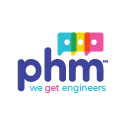3 Ways to Increase Speed & Quality of Hire

It is no secret that there exists a direct correlation between speed of hire & quality of hire and that balancing the two is a challenge many firms face in their search for top talent. Moreover, there is a proven connection between time to hire and candidate experience, as candidates “want their job seeking experience to match their own consumer experiences—fast, transparent and easy.” And the numbers don’t lie—nearly 6 out of 10 (57%) of candidates will pursue other roles, or stay in their current jobs when faced with a lengthy hiring process. So what is the great panacea for companies looking to engage candidates in a positive, expedited hiring process? While there may not be one ‘cure-all’ approach, there are several strategies that can be employed to marry a quality candidate experience with optimal hiring speed.
- Develop a talent pipeline.
Building a talent pipeline begins with a shift in talent management from a reactive to a proactive approach. This is a powerful strategy as it allows you to engage and build relationships with potential prospects long before the need to hire arises. As the time is taken to get to know candidates and understand their needs, you can also more fully assess where their fit may be in your company. Moreover, this time allows you to pursue passive candidates, (those that are not actively looking), but are of the 64% that would be open to something new, should the opportunity arise.
In 2017 Nestle Purina Petcare filled 43% of their positions, before they came open, using its talent pipeline database. According to Nestle, the key to the success of building this pipeline, was “excellent candidate management”, by “personalizing their communications so that they meet the attraction factors of individual candidates.” Subsequently, this level of thorough relationship building lead to improved offer acceptance rates. They also found quality of hire (the on-the-job performance of new hires) to be 10% higher, while time-to-fill was decreased to zero days in some areas, down from 50.
In another example, Red 5 Studios, identified “100 Dream Prospects” and then spent many months building relationships, and assessing a good “fit” for their company without the stress and time-crunch of traditional active sorting approaches.
- Use technology to streamline the talent acquisition process.
The use of AI and gamification have become standard technologies, and can supplement the human element in sourcing and placing top candidates into key roles. Using technology can also speed time-to-hire (and cost savings) and yield an improved candidate experience—"it fulfills the need that candidates have for a ‘high tech, high touch’ experience.”
By employing the use of video interviewing technology and AI, Hilton Worldwide has accelerated their hiring process and dropped their average time-to-hire from 42 days to just 5. Hilton has conducted over 12,000 interviews through a web-based platform called HireVue. Candidates have the ease of applying in their own time--“on-demand”--minimizing the time and effort taken to schedule and arrange meetings, while improving the candidate experience. HireVue’s technology includes AI features that “evaluate candidate communication skills and non-verbal gestures” as well. This on-demand interviewing format accounts for approximately 80% of HireVue’s requests by other companies, such as General Motors, Nike and Red Bull.
Unilever has also embraced AI in their candidate sorting and assessment. Once found through LinkedIn, candidates undertake a series of online games and are short-listed to level 2: a recorded video interview. From there the final list of candidates undergo an in-person interview. Again, this approach balances both speed-of-hire with quality of hire, as skills and aptitude can be measured in the context of ‘gaming’ while little time has been given of hiring managers in the screening process.
Finally, while the use of text to conduct interviews may seem somewhat informal, companies like Aegis Worldwide conduct their initial interviews in this way. Also, OpenTable’s text-based interviews with engineers and programmers keep them in relevant competition for top quality hires with companies like Facebook and Alphabet Inc. It makes sense, as this technology is so readily available and accessible. "Screening candidates via text message allows recruiters to reach 3-5 times more candidates daily.". Furthermore, a Yello Recruiting Study of 1,400 recent graduates found that 86% of millennial and Generation Z candidates felt positively about text messages being used during the interview process. Another survey found 45% of millennials actually prefer holding business conversations through online chat or by text.
- Keep the hiring process as consistent and transparent as possible.
Using the same group of people to conduct interviews can also bring structure and consistency to the process and increase speed of hire. Firms like Google and Intuit use a permanent hiring committee balancing speed of hire with quality as decisions can be made quickly and accurately. Nestle is also moving towards the use of hiring teams “in order to minimize the delay of getting candidates assessed.”
Google, however, did not come to this realization without some growing pains. Initially, Google hiring managers believed that the more people that interviewed a prospective hire, and the more interviews they were subjected to, the greater the yield of quality talent. Consequently, interviews took 6 to 9 months and people sat for 15 to 25 interviews. Looking to revamp this arduous and time-consuming process, Google conducted some research. The results discounted their current their hiring practices. Their findings revealed that 4 interviews were “enough to predict whether someone should be hired at Google with 86% confidence” and that “panels of just 4 interviewers made the same hiring decision as panels of more than 4 interviewers 95% of the time.” The Rule of Four was hence established and this approach has reduced the time to hire by about 2 weeks, improved quality of hires, and reduced candidate frustration. Add to this an even greater level of consistency and transparency: Google uses the same set of questions to assess every candidate interviewing for the same job.
Rodney Moses, former VP of global recruitment for Hilton Worldwide concurs that using the same interview questions brings an added measure of transparency and consistency to the process and believes this objective approach has “improved his team’s ability to accurately compare candidates” and gives “everyone a chance to tell their story.”
At PHM Search | Simply Technical we believe your time is indispensable. Our mission is to help make job change simpler (or easier) for engineering and technical talent and recruit them for employer clients seeking exceptional recruitment solutions and services. We help engineering and technical candidates make the decision of changing jobs simpler and recruit them for clients seeking exceptional talent acquisition solutions.
Contact us to find out how we can solve your recruitment challenges by reducing your time to hire top talent and maximizing the quality of hire through a compelling candidate engagement strategy.
